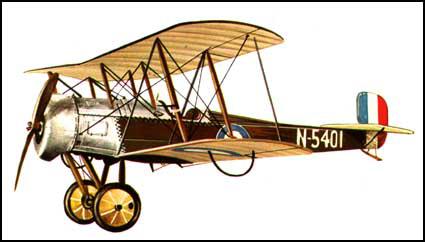Bristol F-2
The Bristol Scout was the first of the planes designed by Frank Barnwell for the British & Colonial Aeroplane Company. Frank Barnwell began work in late 1913 and in February 1914 it reached speeds of 95 mph (153 kph). It was entered for the London-Paris-London race but ran out of fuel on the return trip and was forced down in the Channel.
On the outbreak of the First World War, the Royal Flying Corps placed orders for the Bristol Scout. In 1915 Barnwell worked on a new version, the Scout D. The first of these flew with anti-Zeppelin rockets and four small bombs hung on the fuselage next to the pilot. The Scout D was also armed with an unsynchronized Lewis machine-gun. Later this was replaced by a synchronized Vickers.

Performance Data of the Bristol Scout D | |
|---|---|
Type | fighter |
Engine | 80 hp Le Rhone |
Wing Span | 24 ft 7 in (7.49 m) |
Length | 20 ft 8 in (6.3 m) |
Height | 8 ft 6 in (2.6 m) |
Maximum Speed | 100 mph (161 kph) |
Maximum Height | 16,000 ft (4,877 m) |
Endurance | 2 hours |
Armament | 1 machine-gun |
